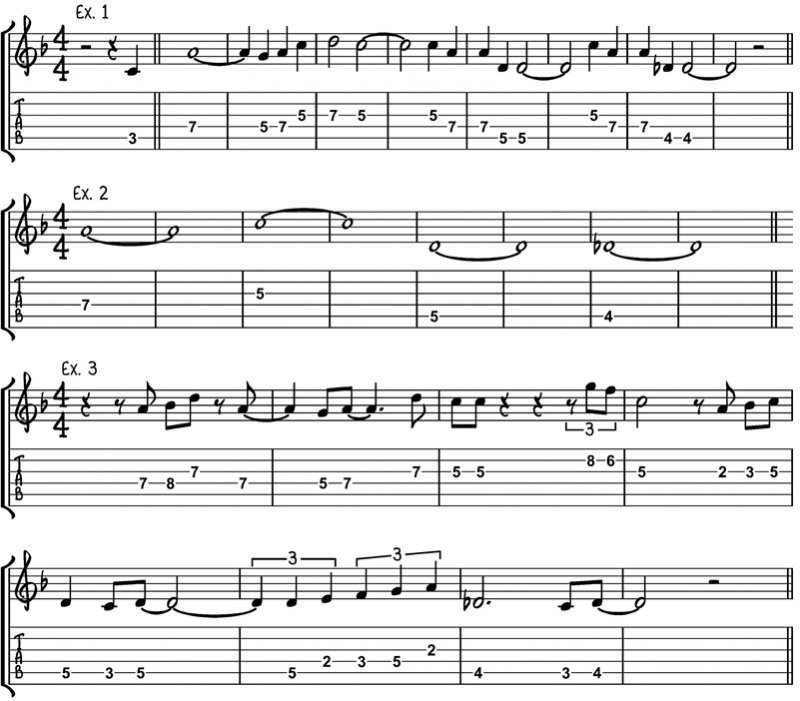Jazz Guitar Shed: Danger – Melody Ahead
Jazz Guitar Shed: Danger – Melody Ahead
So if you fit into one or both of the above categories, when you come to solo theres little or nothing to suggest that you’re playing the same song as the rest of the band. It just sounds like you’re soloing over a chord progression that could come from one of any number of songs.
To avoid this, we need to learn how to solo from the melody of the song you’re actually playing. First, learn the melody! You’re much better off doing this by ear from recordings than out of a Real Book. If you can find a great vocal recording, you’ll also learn a lot about phrasing. (Knowing the lyrics will help you to remember and phrase the melody too). Learn it in at least two octaves, and in different positions all over the guitar.

Once you’ve learnt the melody, I’d like to suggest a couple of approaches. The first is simply to play the melody over and over. And some more… And again… And repeat… You want to get to a point where you’re not desperately thinking about what the next note is, and to know it so well that you start to feel embellishments that are natural to the tune.
Improvise around the melody, and let these embellishments come out, rather than forcing them in. Simple though this sounds, it’s quite hard to do and well worth putting in the time in. For another approach, I’m going to take the first eight bars of The Days of Wine and Roses as an example (Example 1).
Step 1. Find the notes that are most prominent in the melody – these will commonly be long notes, or notes followed by rests or large intervallic leaps. You’re looking to find the essence of the melody (Example 2).
Just play these notes (in this case each note lasts two bars) over the chords. Use a backing track, loop the chords, or get someone to play them with you. Take your time and listen to how the notes fit with the chords, and also how they are part of the whole melody. It’s also good ear training. Once you are comfortable with the notes as written, try them an octave higher, eventually being able to play them all over the guitar in any octave. Take your time with this.
Step 2. Many, if not most, mainstream jazz standards have largely diatonic melodies (ie. the melody comes from one key). In this case, were in the key of F major. Target the prominent notes from Step 1, but start adding in other notes from the F major scale (Example 3). (The Db note in bars 7 and 8 is, of course, not in F major). Once you are comfortable with this, you could then start using approach notes as well.
Step 3. Work through the rest of the tune in a similar way, one section at a time. (You choose how big a section is.) Apply the process to other tunes.
An essential part of improvising is to play A melody. What we’ve looked at here is how to solo from THE melody of a tune.
Working from the existing melody gives you material to develop and use as a springboard for your own melodic ideas. There’s less to think about and you learn to use your ears more effectively. So not only will you sound like you’re playing the same song as everyone else, but by not having to think so much, youll be able to interact with the band more, and have more freedom to play musically. And of course, all of this is applicable to playing any style of music, not just jazz.
Dylan Kay is a professional guitarist and teacher based in Auckland. He can be contacted through his website
www.aucklandguitarschool.co.nz
